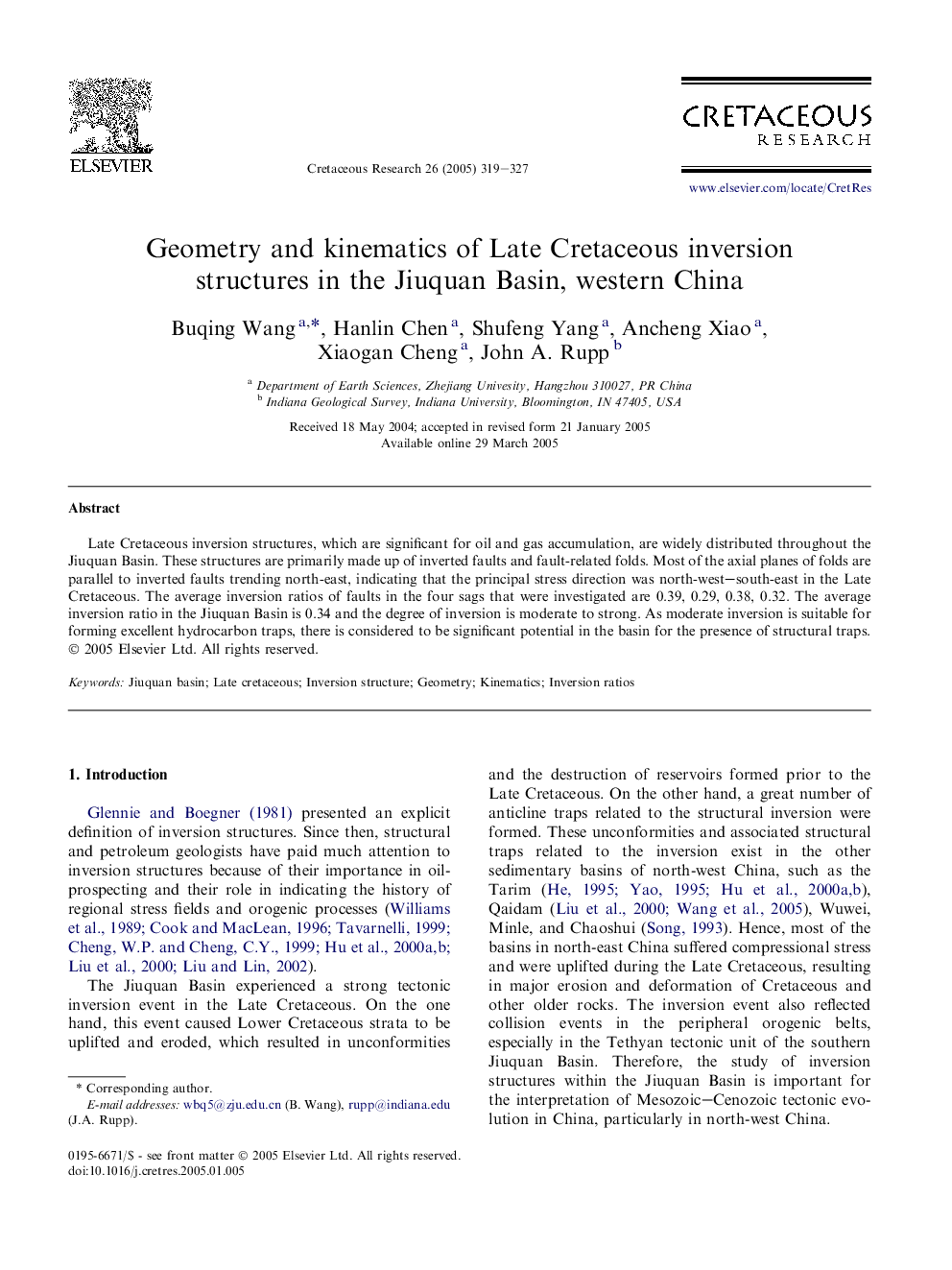| Article ID | Journal | Published Year | Pages | File Type |
|---|---|---|---|---|
| 9538956 | Cretaceous Research | 2005 | 9 Pages |
Abstract
Late Cretaceous inversion structures, which are significant for oil and gas accumulation, are widely distributed throughout the Jiuquan Basin. These structures are primarily made up of inverted faults and fault-related folds. Most of the axial planes of folds are parallel to inverted faults trending north-east, indicating that the principal stress direction was north-west-south-east in the Late Cretaceous. The average inversion ratios of faults in the four sags that were investigated are 0.39, 0.29, 0.38, 0.32. The average inversion ratio in the Jiuquan Basin is 0.34 and the degree of inversion is moderate to strong. As moderate inversion is suitable for forming excellent hydrocarbon traps, there is considered to be significant potential in the basin for the presence of structural traps.
Related Topics
Physical Sciences and Engineering
Earth and Planetary Sciences
Palaeontology
Authors
Buqing Wang, Hanlin Chen, Shufeng Yang, Ancheng Xiao, Xiaogan Cheng, John A. Rupp,
